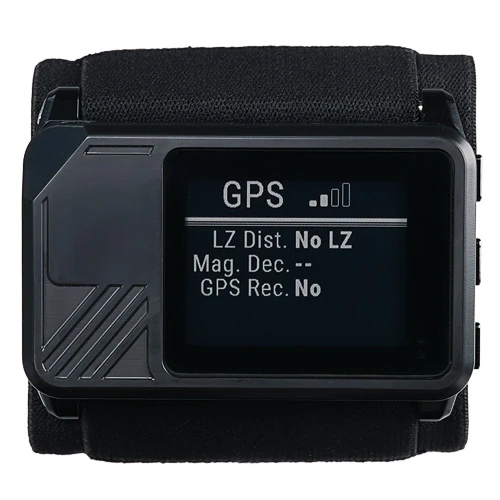The Insight altimeter provides features to mark your intended Landing Zone (LZ) using latitude and longitude coordinates. This allows real time display of the distance to the LZ during the plane ride, spotting and even in freefall and under canopy. Display features such as LZ glide, distance to LZ, and turn to LZ require the LZ coordinates to be set.

Insight main GPS screen
To set your LZ coordinates go to the main GPS screen. Press the center button to enter the GPS menu, and you will see two options:
- Mark LZ Here
- LZ Coordinates
Mark LZ Here #
This options provides a straightforward way to mark your current location. While this screen is open the GPS module will be on and searching for satellites to give you the most accurate GPS position possible.
Tips:
- To assist the GPS signal, stand in a clear area with no overhead obstructions within a 20 foot radius.
- It may take up to 5 minutes for the GPS to acquire your location for the first time.
- Stand at your desired landing point when marking the LZ to have the most accurate distance reporting from the LZ while on jumprun.
Once the GPS has a good signal it will show you current location latitude and longitude using the decimal degrees format, as well as your MSL (mean sea level) altitude. You can select “save” to store this location as your LZ for future jumps, or “cancel” to exit this screen without updating your LZ.
LZ Coordinates #
Select this menu option to manually enter the LZ coordinates. This is useful if you are going to do off-site jumps (aka InHoppe), or if you just don’t want to walk out to the main landing area at your dropzone. For this option you will need to use a mapping app that allows you to drop a pin and copy the coordinates in decimal degrees format.
You can also use this GPS coordinate converter if you only have a street address or lat/lon in a different format than decimal degrees.




